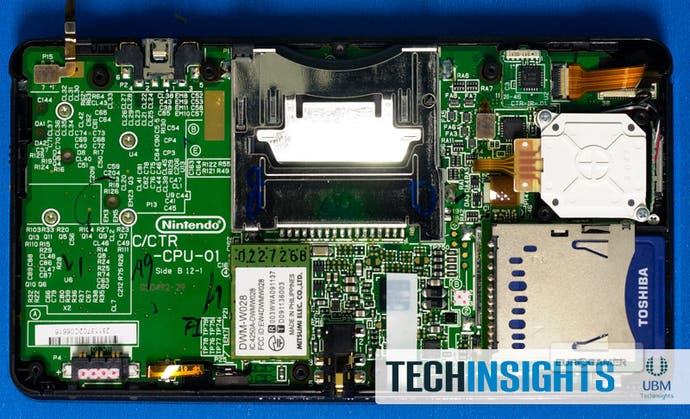Why the Nintendo 3DS costs £230
Nintendo's new handheld ripped open and costed up.
"An absolute outrage!"; "Shameful exploitation"; "I love living in rip-off Britain". Just a small selection of reader reaction to the news that the 3DS would sell for around £230 when it debuted in the UK.
Although a number of brave retailers now offer it for £187 following a furious tit-for-tat price war, that's still considerably higher than either the DS (£129.99) or GBA (under £100) when they hit the shelves, not to mention substantially more than the $250 (around £165) that US gamers will shell out for the device.
So, are we being ripped off? Or is Nintendo - and your chosen retailer - offering consumers the best possible value for money given what the machine is capable of?
Perhaps unsurprisingly, Nintendo itself would have you believe its new box of tricks is worth every penny. Back in January, Nintendo UK boss David Yarnton told Eurogamer that the 3DS is "really good value".
"The fact it's a 3D entertainment device - you can't get anything that's 3D at that sort of price without having to wear glasses as well. Get that one in."
By and large, retailers and industry analysts agree.

"I have no concerns that the £220 price point is sufficient," EEDAR analyst Jesse Divnich says. "The 3DS is a beautiful piece of technology, one that all core gamers should experience. I don't foresee the £220 price point hindering any purchases."
Wedbush Morgan mouthpiece Michael Pachter has no problem with the figure either.
"I'm sure people will complain in a really tough economy, and I don't blame them - it's clearly expensive. However, the fact is the device will be in tight supply, with probably fewer than 500,000 available for the UK market, and so Nintendo is charging what it thinks the market will bear."
HMV marketing chief Gennaro Castaldo also sympathises with gamers, but added that in the long run, the tag is just about right.
"I can see why it sounds like quite a sum of money to some people, but we're talking about brilliant new technology here that will have cost many millions to develop, so it's understandable that Nintendo and other parties involved feel a need to make a return on it," he tells Eurogamer.
"Also - think how many times it will be used and enjoyed over its lifetime, so as players we'll end up getting a great deal of value out of it over a number of years. Very little comes cheap in this world, and we all know that if you want something of real quality, then you have to pay for it."

As Castaldo says, Nintendo's desire to make a profit on the gadget is perfectly reasonable. But how much, exactly, is it raking in?
According to a "preliminary estimate" handed to Eurogamer by David Carey, VP of technical intelligence for UBM TechInsights, the cost of the system's raw materials comes in at $101 per unit (around £61.76). That equates to around a $15 (around £9.17) increase over the DSi, which launched in 2009 for £149.
Compare that to the 3DS's initial £230 asking price and you wouldn't be blamed for smelling a rat. Bear in mind though that the DSi was released relatively late in the handheld's phenomenally successful life cycle, at a time when Nintendo could afford to take risks, having already made back a significant wedge of its original R&D investment.
Of course, on top of the raw materials there are also a number of other costs to consider, such as labour, marketing, packaging and distribution, not to mention those sizeable R&D costs to recoup. Naturally, Nintendo won't reveal what its margin is or what it charges retailers per unit. However, a reliable retail source tells Eurogamer the going price is £170.73.








